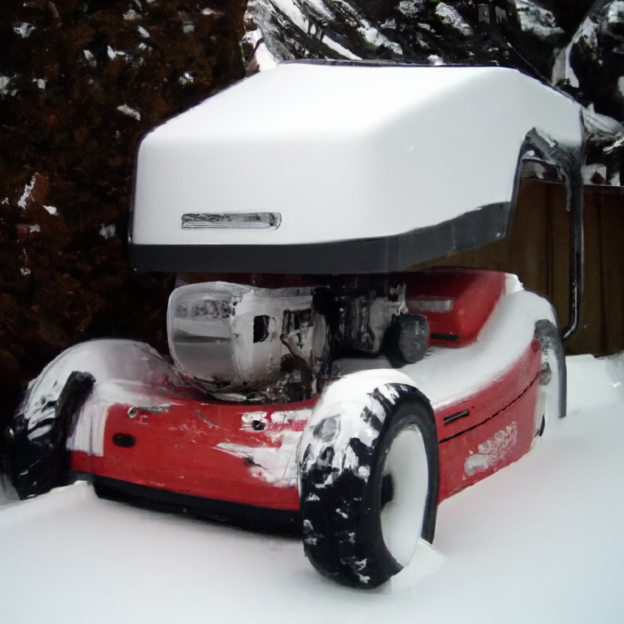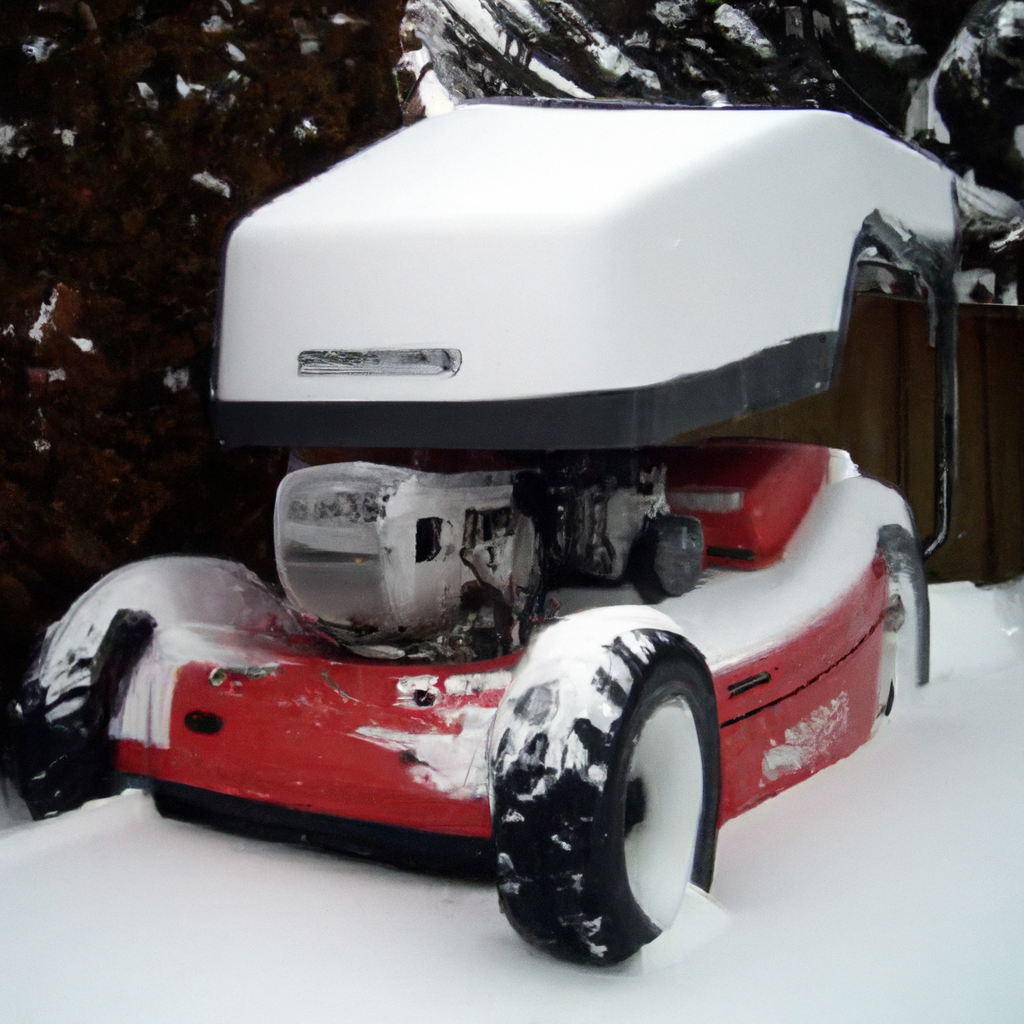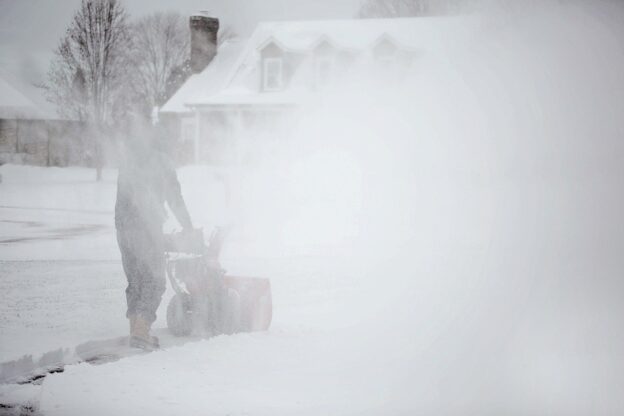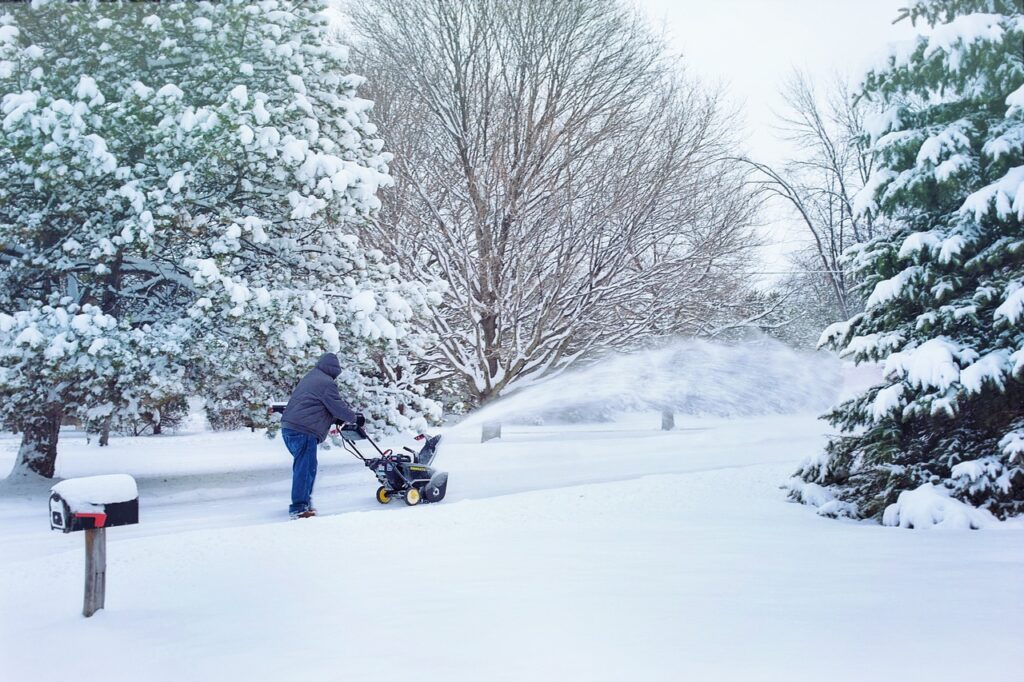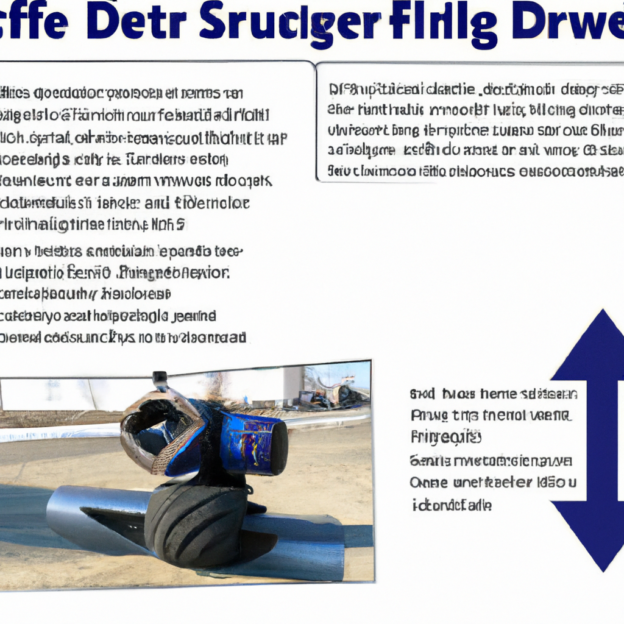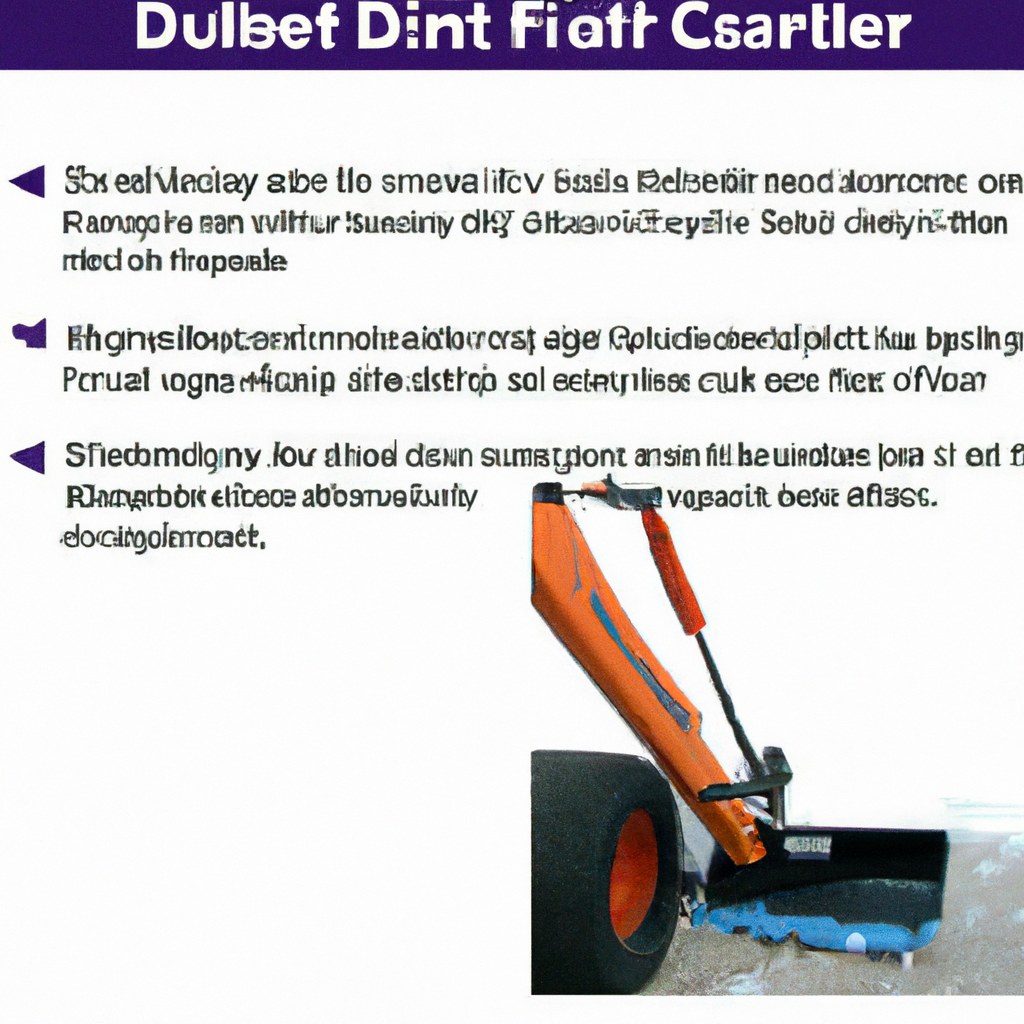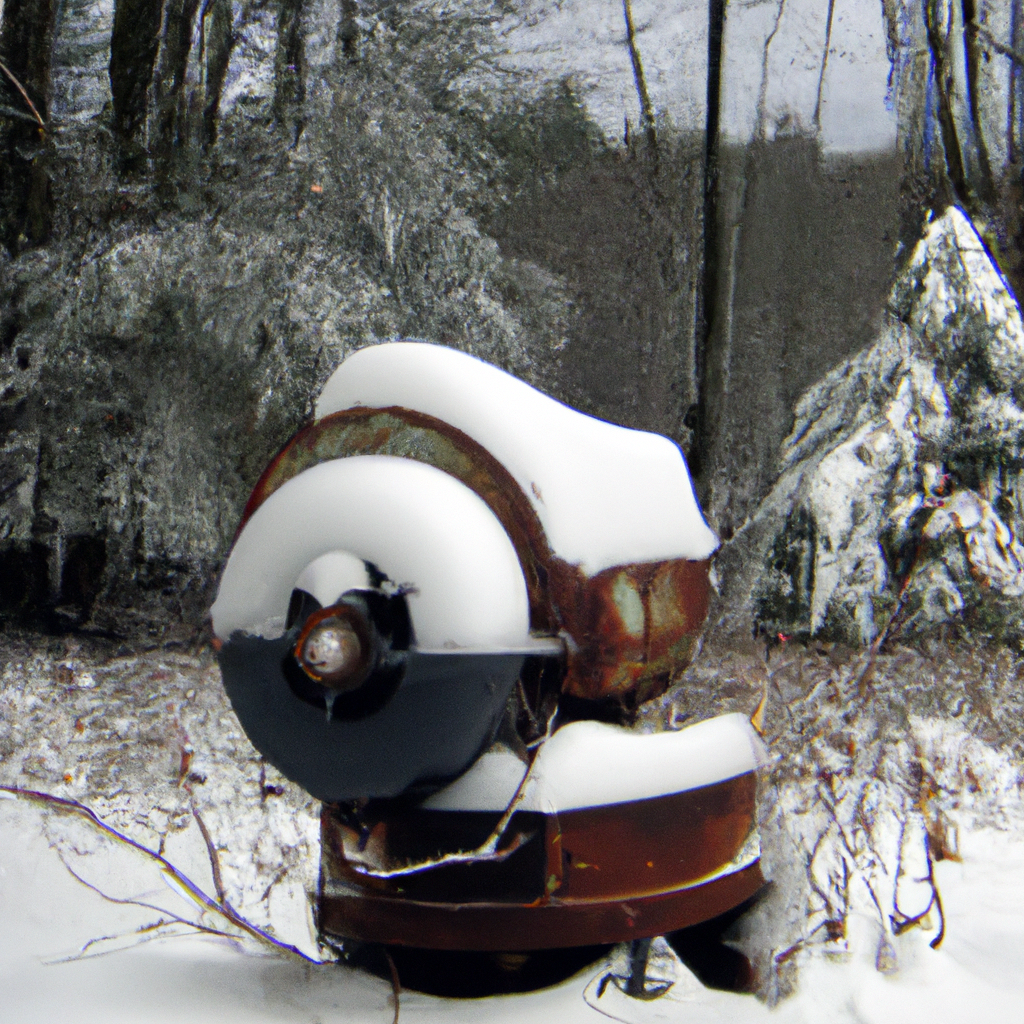So you’re gearing up for winter and getting everything ready to tackle the snow, but you’ve encountered a problem with your trusty snowblower. No need to panic, because in this article, we’ll walk you through some common issues you might face and how to troubleshoot them. From clogged chutes to engines that won’t start, we’ve got you covered. Get ready to take on winter like a pro with these helpful tips and tricks for troubleshooting your snowblower.
1. Engine Won’t Start
If your snowblower’s engine won’t start, there are a few things you should check before calling for professional help.
1.1. Check Fuel Level
The first thing to check is the fuel level. Make sure you have enough fuel in the tank to properly start the engine. If the fuel level is low, refill it with fresh gasoline and try starting the engine again.
1.2. Inspect Spark Plug
A faulty spark plug can prevent the engine from starting. Remove the spark plug and inspect it for any signs of damage or wear. If the spark plug is dirty or the electrode is worn out, replace it with a new one.
1.3. Clean or Replace Carburetor
A clogged carburetor can also cause the engine to not start. Remove the carburetor and clean it thoroughly with carburetor cleaner. If cleaning doesn’t solve the issue, you may need to replace the carburetor.
1.4. Check Ignition System
The ignition system plays a vital role in starting the engine. Inspect the ignition coil, spark plug wire, and ignition switch for any signs of damage. If any components are faulty, they may need to be replaced to ensure proper ignition.
2. Engine Runs Roughly
If your snowblower’s engine is running roughly, it can affect its performance and efficiency. Here are a few troubleshooting steps to address this issue.
2.1. Check Fuel Quality
Poor fuel quality can lead to engine issues. Ensure that you are using fresh gasoline with the correct fuel-to-oil ratio recommended by the manufacturer. If the fuel quality is compromised, drain the old fuel and refill with fresh fuel.
2.2. Clean or Replace Air Filter
A clogged air filter can restrict airflow to the engine, causing it to run roughly. Remove the air filter and clean it with compressed air or replace it with a new one if it is damaged or excessively dirty.
2.3. Adjust Throttle and Choke
Improper throttle and choke settings can affect engine performance. Adjust the throttle to the appropriate position and ensure the choke is adjusted correctly for starting and running conditions.
2.4. Inspect Fuel Line and Filter
A clogged or damaged fuel line or filter can cause fuel supply issues, leading to rough engine performance. Inspect the fuel line for any cracks, leaks, or blockages. Replace the fuel line or filter if necessary.

This image is property of cdn-icmob.nitrocdn.com.
3. Auger Not Turning
If the auger on your snowblower is not turning, it will not effectively remove snow. Here’s what you can do to troubleshoot this problem.
3.1. Check Shear Pins and Bolts
Shear pins and bolts secure the auger to the shaft. Check if any shear pins or bolts are broken or missing. Replace them with new ones if necessary. Ensure that the auger is properly attached to the shaft.
3.2. Inspect Drive Belt
A worn or damaged drive belt can cause the auger to stop turning. Inspect the drive belt for any signs of wear or damage. If the belt appears worn or cracked, replace it with a new one as soon as possible.
3.3. Check Auger Control Cable
The auger control cable connects the control handle to the auger. Check if the cable is properly attached and not loose or broken. Adjust or replace the cable if required.
3.4. Inspect Shear Key
The shear key is a small metal piece that connects the auger to the engine shaft. If the shear key is damaged or broken, it will prevent the auger from turning. Inspect the shear key and replace it if necessary.
4. Wheels Not Engaging
If the wheels of your snowblower are not engaging, it can make it difficult to move and operate the machine. Follow these troubleshooting steps to address this issue.
4.1. Check Traction Drive Belt
The traction drive belt connects the engine shaft to the wheels, allowing them to engage. Inspect the traction drive belt for any signs of wear or damage. If the belt is worn or broken, replace it with a new one.
4.2. Inspect Wheel Drive Plate
The wheel drive plate transfers power from the engine to the wheels. Inspect the drive plate for any signs of wear or damage. If the drive plate is worn out, it may need to be replaced.
4.3. Adjust Cable Tension
The cable tension controls the engagement of the wheels. Ensure that the cable is properly tensioned, allowing the wheels to engage when the control lever is activated. Adjust the cable tension as necessary.
4.4. Inspect Wheel Engagement Lever
The wheel engagement lever controls the engagement and disengagement of the wheels. Check if the lever is functioning properly and not stuck or damaged. Lubricate or replace the lever if needed.

This image is property of www.weingartz.com.
5. Snow Not Discharged Properly
If your snowblower is not discharging snow properly, it can lead to inefficient snow removal. Follow these troubleshooting steps to address this issue.
5.1. Clear Snow Clogs
Obstructions or clogs in the snow discharge chute can prevent snow from being discharged properly. Clear any snow buildup or debris in the chute to ensure smooth snow discharge.
5.2. Inspect Impeller
The impeller is responsible for throwing snow out of the discharge chute. Inspect the impeller for any damage or obstructions. Remove any debris or replace the impeller if necessary.
5.3. Check Discharge Chute
The discharge chute directs the snow away from the machine. Ensure that the chute is not clogged or misaligned. Adjust or clear the chute as needed to improve snow discharge.
5.4. Adjust Auger Belt Tension
The auger belt transfers power from the engine to the auger. If the belt is loose or worn, it may not be able to properly discharge the snow. Adjust the tension of the auger belt or replace it if necessary.
6. Electric Starter not Working
If the electric starter on your snowblower is not working, you may face difficulties starting the engine. Here are some troubleshooting steps to address this problem.
6.1. Check Power Source
Ensure that the power source supplying the electric starter is functioning. Check if the outlet has power and that any extension cords or connections are secure. If necessary, try a different power source or outlet.
6.2. Inspect Starter Motor
The starter motor is responsible for turning the engine with the help of gears. Inspect the starter motor for any signs of damage or malfunctions. If the starter motor is faulty, it may need to be replaced.
6.3. Test Starter Switch
The starter switch activates the electric starter motor. Test the starter switch to ensure it is functioning properly. If the switch is defective, it may need to be replaced.
6.4. Check Starter Solenoid
The starter solenoid controls the flow of electricity to the starter motor. Check the solenoid for any signs of damage or failure. Replace the solenoid if necessary to ensure proper functioning of the electric starter.
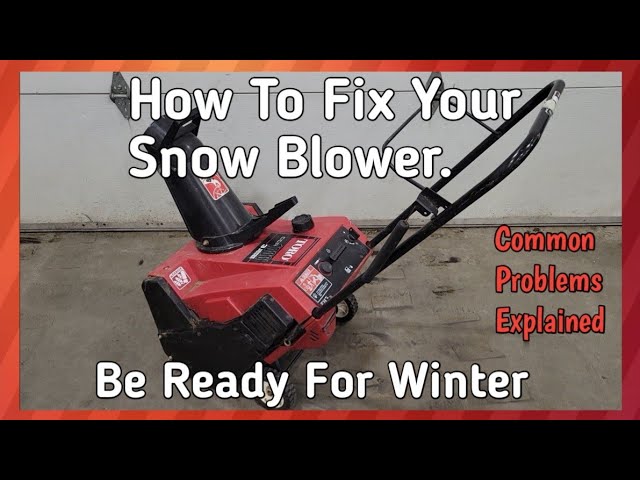
This image is property of i.ytimg.com.
7. Handlebar or Controls Malfunctioning
If the handlebar or controls on your snowblower are malfunctioning, it can affect the overall operation of the machine. Here’s how you can address this problem.
7.1. Tighten Loose Connections
Check all connections between the handlebar and the rest of the machine. Tighten any loose bolts, nuts, or screws that may be causing the handlebar or controls to malfunction.
7.2. Inspect Control Cables
Inspect the control cables that connect the handlebar to various components of the snowblower. Ensure that the cables are not frayed, damaged, or stretched. Replace any faulty cables to restore proper functionality.
7.3. Lubricate Mechanisms
Lubricate any moving mechanisms, such as control levers or linkages, to ensure smooth operation. Use a silicone-based lubricant or a lubricant recommended by the manufacturer. Avoid using excessive amounts of lubricant.
7.4. Replace Faulty Components
If the handlebar or controls continue to malfunction, even after ensuring all connections are tight and lubricating the mechanisms, there may be faulty components that require replacement. Consult the manufacturer or a professional for further assistance.
8. Excessive Vibrations
Excessive vibrations during operation can indicate underlying issues with your snowblower. Here are some steps to troubleshoot this problem.
8.1. Check for Loose Bolts or Nuts
Inspect the snowblower for any loose bolts or nuts. Vibration can cause fasteners to become loose over time. Tighten any loose bolts or nuts to reduce excessive vibrations.
8.2. Inspect Auger Bearings
Worn or damaged auger bearings can cause excessive vibrations. Inspect the bearings for any signs of wear, noise, or roughness. Replace any worn or damaged bearings to reduce vibrations.
8.3. Replace Damaged Skid Shoes
Skid shoes help guide the snowblower over the ground. If the skid shoes are worn or damaged, it can lead to excessive vibrations. Replace any damaged or worn skid shoes to improve stability and reduce vibrations.
8.4. Adjust Engine Mounting Bolts
Loose or improperly adjusted engine mounting bolts can contribute to excessive vibrations. Ensure that the engine mounting bolts are secure and properly tightened. Adjust or tighten the bolts as necessary.

This image is property of i.ytimg.com.
9. Poor Snow Throwing Distance
If your snowblower is not throwing snow a sufficient distance, it can be frustrating and time-consuming. The following troubleshooting steps can help improve snow throwing distance.
9.1. Check Engine RPM
Insufficient engine RPM can affect the snow throwing distance. Consult the owner’s manual to determine the recommended RPM for your specific snowblower model. Adjust the engine throttle or consult a professional mechanic to ensure the engine is running at the correct RPM.
9.2. Adjust Snow Chute Angle
The snow chute angle determines the direction and distance of the snow being thrown. Adjust the chute angle to optimize the snow throwing distance. Consult the owner’s manual for instructions on adjusting the chute angle for your snowblower model.
9.3. Clear Snow Build-up
Built-up snow or ice can obstruct the snowblower’s chute, impeller, or auger, resulting in poor snow throwing distance. Regularly clear any snow or ice build-up to ensure unobstructed snow discharge and maximize throwing distance.
9.4. Inspect Auger Paddles
Worn or damaged auger paddles can lead to reduced snow throwing distance. Inspect the auger paddles for any signs of wear or damage. Replace any worn or damaged paddles to maintain optimal performance and snow throwing distance.
10. Excessive Fuel Consumption
If your snowblower is consuming an excessive amount of fuel, it can be costly and inefficient. Follow these troubleshooting steps to address this issue.
10.1. Ensure Proper Fuel Mixture
Ensure that you are using the correct fuel-to-oil mixture recommended by the manufacturer. Improper fuel mixture can result in increased fuel consumption. Use a fuel measuring cup to ensure accurate fuel mixing.
10.2. Clean or Replace Fuel Line
A clogged or dirty fuel line can restrict fuel flow, causing the engine to consume more fuel. If the fuel line appears clogged or damaged, clean it thoroughly or replace it with a new one to maintain proper fuel flow.
10.3. Check Fuel Tank Vent
A blocked or improperly functioning fuel tank vent can lead to inefficient fuel consumption. Ensure that the fuel tank vent is clear and allowing proper airflow. Clean or replace the vent if necessary.
10.4. Adjust Carburetor Settings
Incorrect carburetor settings can result in excessive fuel consumption. Consult the owner’s manual for guidance on adjusting the carburetor settings. If you are unsure, it’s best to seek assistance from a professional.
By following these troubleshooting steps, you can address common snowblower problems and keep your machine running smoothly. Remember to consult the owner’s manual or seek professional assistance if you encounter any difficulties during troubleshooting.

This image is property of www.thespruce.com.

